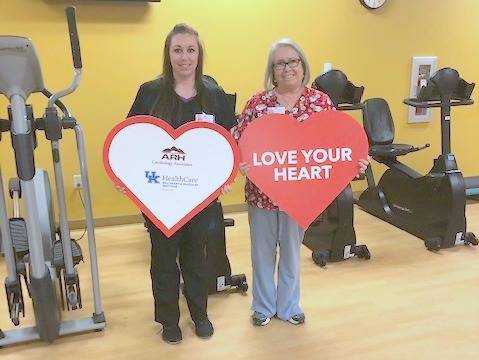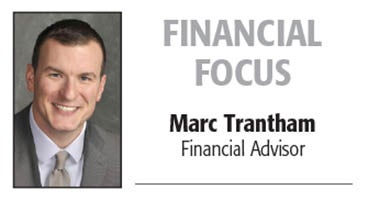ARH Cardiac Rehab gets heart patients back on their feet
Published 10:42 am Monday, March 2, 2020

Photo courtesy of ARH
Pictured are ARH exercise physiologist Heather Whitson and registered nurse Larcena Evans.
|
Getting your Trinity Audio player ready...
|
Heather Whitson, an exercise physiologist, has been working at the ARH Cardiac Rehab Clinic in Hazard for five years. Heather and her coworker Larcena Evans, a registered nurse, serve about 80 to 100 cardiac patients per year. Located in the ARH Outpatient Medical Mall on Black Gold Boulevard, the cardiac rehab clinic shares space with a number of other outpatient clinics and healthcare services.
Cardiac Rehab treats patients with a variety of conditions, including those in recovery for CABG (Coronary Artery Bypass Grafting) surgery, heart valves and valve replacements, stents, heart attacks and stable angina. The ARH Medical Mall is perfectly outfitted to address the needs of these patients.
“There’s a cardiologist, a cardiac surgeon, a CV Imaging area and a pharmacy, so it’s very convenient for our patients,” Heather said. “We see patients for two phases. During Phase Two Cardiac Rehab, the patients wear a monitor, and they come see us three times a week for 12 weeks, so 36 visits. Insurance helps pay for Phase Two Rehab treatments.”
Heather said that phase two starts out slowly, emphasizing cardiovascular exercise to strengthen the heart muscle. She slowly increases patients’ time on machines like the treadmill, recumbent bike and elliptical, and sometimes she sends them home with a resistance band to continue exercising on their own. During phase two, patient vital signs are checked before and after each machine in order to make sure they’re remaining stable throughout their session. If anything were to happen, a physician is always on-site.
Along with the exercise program, new cardiac rehab patients are also given a one-on-one pharmacy consultation.
“The pharmacist is in the building, so we just walk them down the hall. They go over their medications, and basic things like not to eat grapefruit when taking their cholesterol prescriptions.”
Patients also have access to a nutritionist, who comes from the Hazard ARH Hospital quarterly to discuss healthy eating in a group setting.
“We plan those quarterly so that we can try to capture as many patients as possible. Last week we had about ten patients in that group,” Heather said.
Once patients complete cardiac phase two, they move on to phase three. Phase three is an ongoing, self-pay program.
“When phase three patients visit cardiac rehab, we check them in, and they can stay and exercise for as long as they like. As long as they think it will benefit them,” Heather said. “Phase two is about education, lifestyle changes and getting started. Phase three is about maintenance. We do still check their vital signs before and after exercise, but not before and after each machine. So, they’re on their own, but not totally.”
Heather says that they can see up 40 phase two patients per year, and around 45 to 50 phase three patients, some of whom have been visiting the clinic for years. Heather is proud of her patients and how they progress under her and Larcena’s care.
“We see quite a few patients each year,” she said, “and our patients do really well with the exercise and educational program.”
Paul Hall is Hazard’s longest-standing continual patient for the cardiac rehab program. In 2007, Paul got an aortic valve replacement, and began attending cardiac rehab for Phase Two monitoring three times a week.
After completing his 36 initial phase two visits, Paul enrolled in phase three monitoring and has stayed on his three-visit-per-week schedule for over twelve years, logging over 1,500 visits at the clinic.
“I rarely miss,” he said. “They do a good job there, the staff is great, and they’re reasonably priced. Keeping my regular schedule there is the healthy thing to do.”
Paul’s cardiologist is in full agreement with Paul’s decision, as Paul hasn’t had a single cardiac problem since beginning at the clinic in 2007.
“I see my cardiologist once a year and the last time I went, he said if I continue doing this well, I might only need to see him every two years,” he said. “I have no plans to stop visiting ARH Cardiac Rehab as long as I’m able to go, I’ll keep it up. There are a number of patients like me who’ve been in the program for a long time, and I’d recommend it to anyone.”






